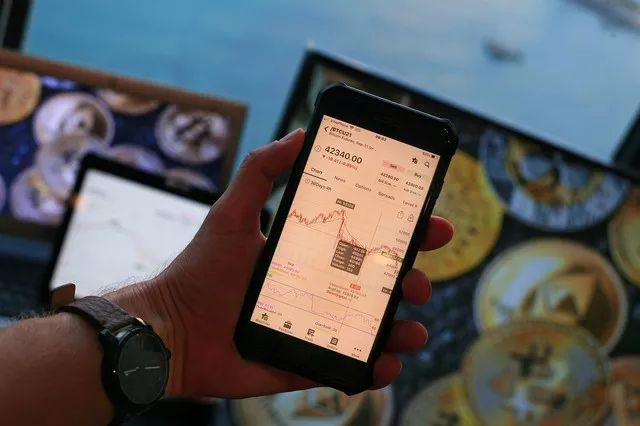S&P 500 futures, a cornerstone of the futures market, provide traders with a unique opportunity to speculate on the future direction of the S&P 500 index. As a reflection of the collective performance of 500 leading U.S. companies, the S&P 500 is a significant indicator of the health of the stock market and the broader economy. For traders seeking to venture into the world of futures trading, comprehending the intricate process of how S&P 500 futures are calculated is essential.
The Foundation: The S&P 500 Index
At the core of S&P 500 futures lies the S&P 500 index, a weighted average of the stock prices of 500 of the largest publicly traded companies in the U.S. This index serves as a comprehensive gauge of the overall performance of the stock market and is widely regarded as a barometer of economic health. As such, the value of the S&P 500 index plays a pivotal role in the calculation of S&P 500 futures.
The formula for calculating the S&P 500 index involves several steps. It starts with summing the market capitalizations of the 500 constituent companies. The market capitalization of each company is calculated by multiplying its stock price by the number of outstanding shares. The sum of the market capitalizations is then divided by a divisor, which is adjusted to account for changes in the index components, stock splits, and other factors.
Incorporating Dividends
One of the distinguishing features of the S&P 500 index is its inclusion of dividends. Dividends represent a portion of a company’s earnings that is distributed to shareholders. The S&P 500 index includes the reinvestment of dividends, which means that the value of the index reflects not only changes in stock prices but also the income generated by the constituent companies.
When calculating the S&P 500 index, the total return version takes into account both stock price changes and dividends. This comprehensive approach provides a more accurate representation of the actual returns that investors would have realized over time.
Factors Influencing S&P 500 Futures Pricing
S&P 500 futures are derived from the underlying S&P 500 index, and their pricing is influenced by several key factors:
1. S&P 500 Index Value: The most direct influence on S&P 500 futures pricing is the value of the underlying S&P 500 index. As the index value changes, it impacts the value of the futures contract.
2. Interest Rates: Interest rates play a role in the cost of carrying the underlying stocks that make up the index. Changes in interest rates can affect the pricing of S&P 500 futures.
3. Dividend Expectations: Anticipated changes in dividend payments by the constituent companies can influence the pricing of S&P 500 futures. Higher expected dividends can lead to higher futures prices.
4. Market Sentiment: Overall market sentiment, investor expectations, and macroeconomic factors can contribute to shifts in demand and supply for S&P 500 futures, influencing their pricing.
Mechanisms of Calculation and Trading
The calculation of S&P 500 futures prices involves a complex process that considers the current value of the S&P 500 index, the cost of carry, interest rates, and dividend expectations. This intricate interplay between various factors contributes to the determination of the fair value of S&P 500 futures contracts.
S&P 500 futures are traded on futures exchanges such as the Chicago Mercantile Exchange (CME). The pricing of these futures contracts is continually updated throughout the trading session based on market movements and changes in the underlying index value.
Arbitrage and Fair Value
Traders and market participants often engage in arbitrage to exploit any discrepancies between the futures price and the fair value of the underlying index. Arbitrage involves simultaneously buying or selling the S&P 500 index and its corresponding futures contract to capitalize on price differentials. Arbitrage activities help maintain a close alignment between the futures price and the underlying index value.
Role of Market Makers
Market makers play a critical role in ensuring liquidity and efficient pricing in the S&P 500 futures market. Market makers facilitate trading by providing buy and sell quotes for S&P 500 futures contracts. They profit from the bid-ask spread—the difference between the buying and selling prices—while also helping to narrow any price discrepancies between futures contracts and the underlying index.
Hedging and Speculation
S&P 500 futures serve two primary purposes for traders: hedging and speculation. Hedging involves using futures contracts to offset potential losses from adverse price movements in the underlying stocks. For example, an investor holding a portfolio of S&P 500 stocks might use S&P 500 futures to hedge against market downturns.
Speculation, on the other hand, involves trading S&P 500 futures to profit from anticipated price movements. Traders who believe the index will rise might go long on S&P 500 futures, while those expecting a decline might go short.
Conclusion
The calculation of S&P 500 futures involves a complex interplay of factors, including the underlying S&P 500 index value, dividend expectations, interest rates, and market sentiment. These intricate mechanisms contribute to determining the pricing of S&P 500 futures contracts. Understanding these calculations is essential for traders and investors seeking to engage in the world of futures trading. By grasping the foundation of S&P 500 futures pricing, participants can make informed trading decisions, effectively manage risk, and capitalize on the opportunities presented by this dynamic and influential market.


